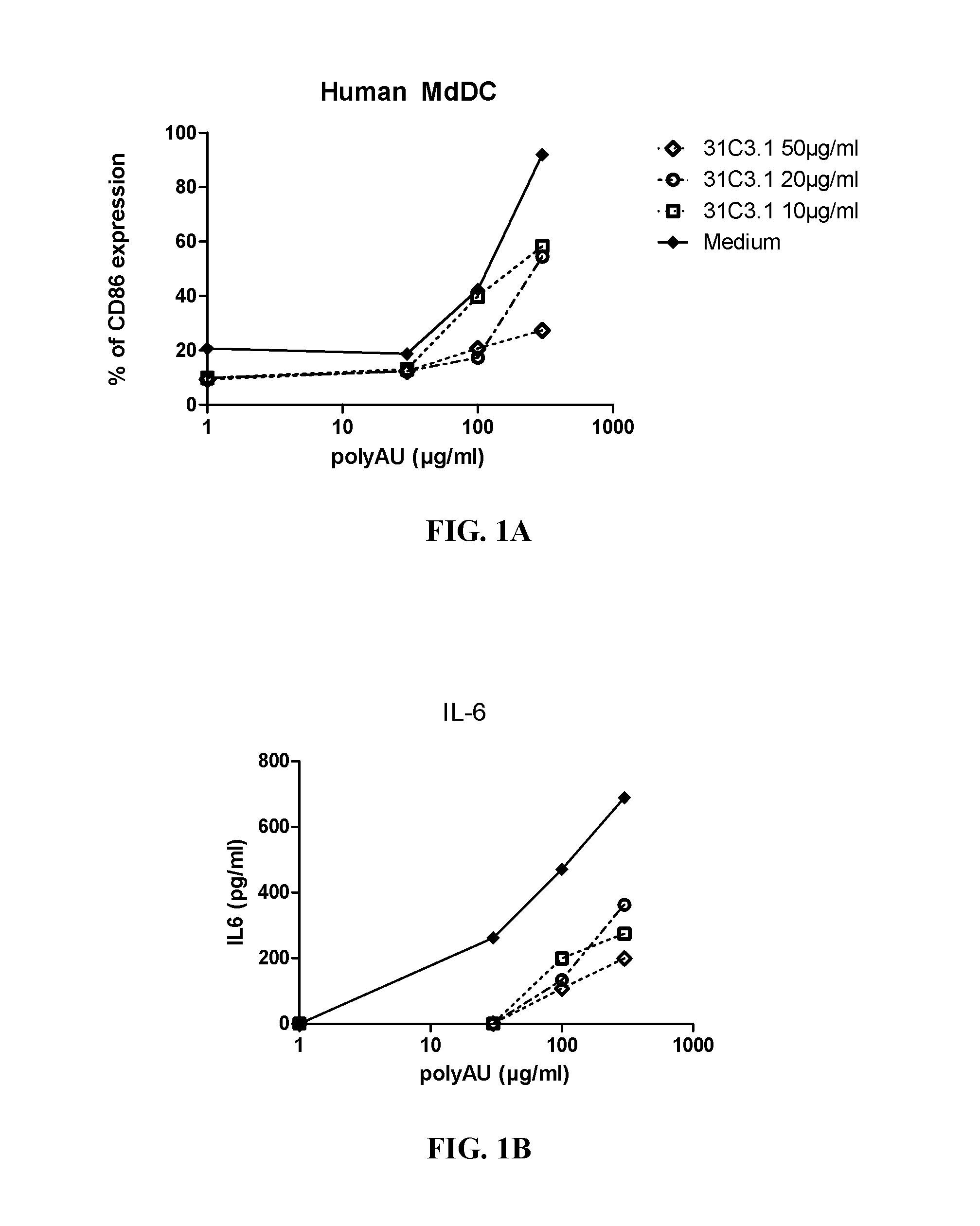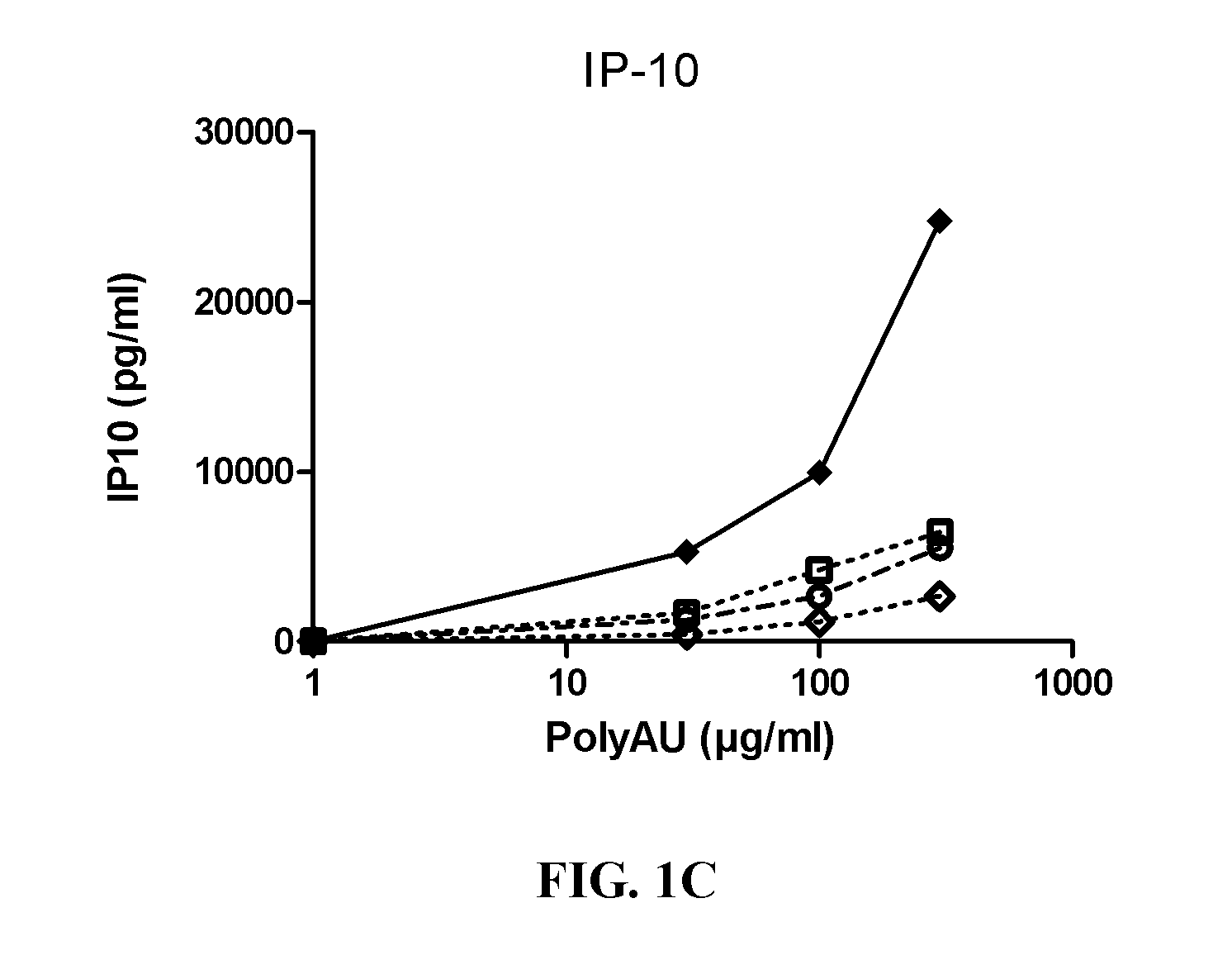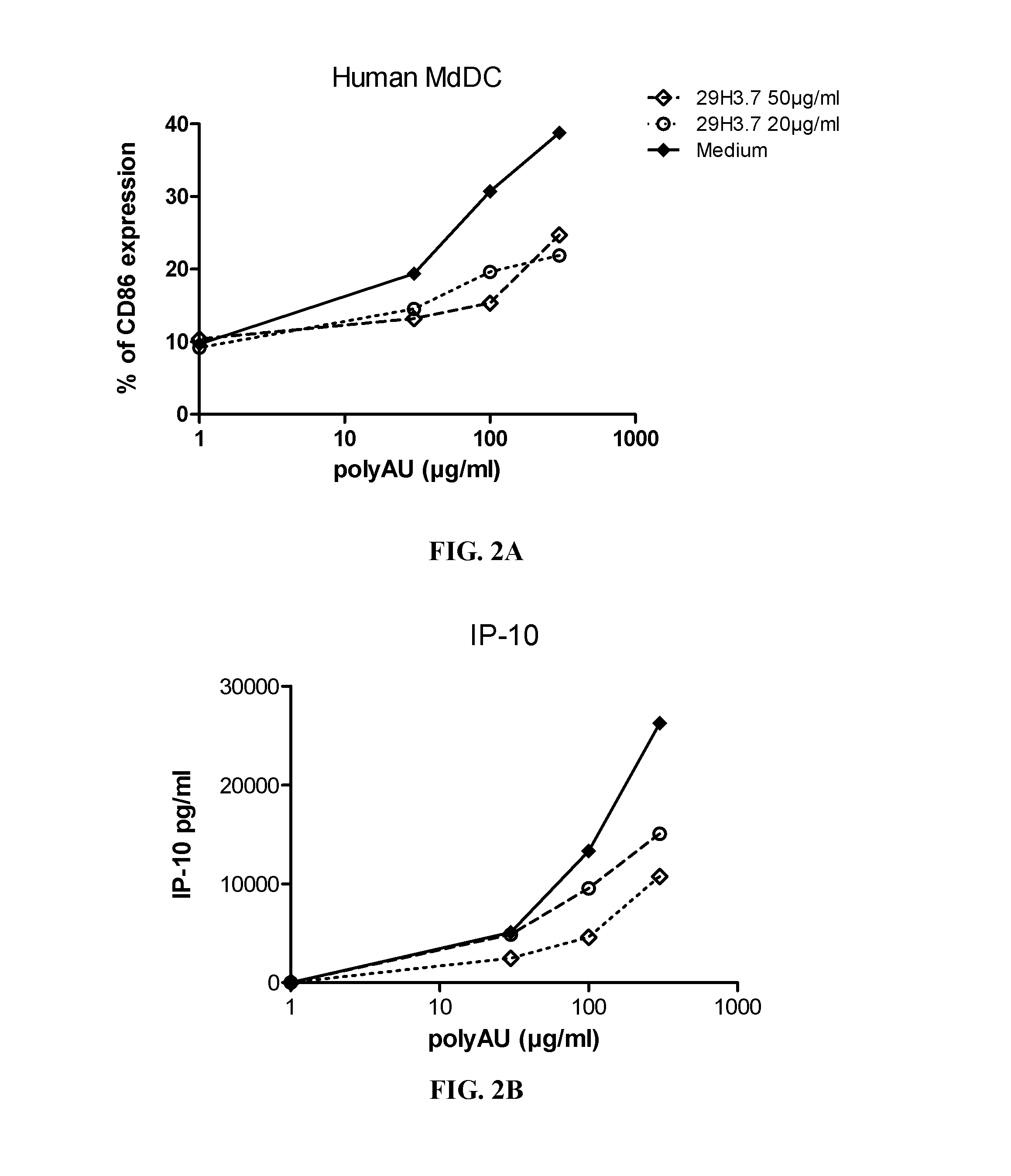Tlr3 binding agents
- Summary
- Abstract
- Description
- Claims
- Application Information
AI Technical Summary
Benefits of technology
Problems solved by technology
Method used
Image
Examples
example 1
Generation of TLR3-Specific Monoclonal Antibodies
Immunization #1
[0341]Primary screen. To obtain anti-TLR3 antibodies, Balb / c mice were immunized with a recombinant human His-tagged TLR3 extracellular domain recombinant protein (R&D systems, #1487-TR-050). Mice received one primo-immunisation with an emulsion of 50 μg TLR3 protein and Complete Freund Adjuvant, intraperitoneally, a 2nd immunization with an emulsion of 50 μg TLR3 protein and Incomplete Freund Adjuvant, intraperitoneally, and three boosts with 10 μg TLR3 protein, intravenously. Immune spleen cells were fused with X63.Ag8.653 immortalized B cells, and cultured in the presence of irradiated spleen cells. 40 culture plates were obtained and evaluated in a first screen for TLR3 binding using an ELISA developed for detection of binding to TLR3. Briefly, His-tagged recombinant TLR3 protein (R&D systems, #1487-TR-050) was coated on Ni-NTA 96-wells plates (Qiagen). Supernatant (SN) from hybridoma culture plates and incubated in...
example 2
TLR3 Modulation
[0348]Myeloid DC (MdDC) were obtained from PBMC by isolating PBMC from normal healthy human donors. Monocytes were purified from PBMC using positive selection with human CD14 microbeads (Miltenyi Biotech) following general instructions. Monocytes were further derived into DC (MdDC) by 5-6 days incubation in human GM-CSF (Leucomax, SP) and human IL-4 (R&D Systems) at respectively 200 ng / ml and 20 ng / ml.
[0349]The resulting MdDC were then seeded at 106 cells / ml, in duplicate, in flat bottom 96-well plates. Cells were activated for 20 hours in a final volume of 200 μl, together with the anti-TLR3 antibodies at the indicated concentrations. Increasing amounts of polyAU (30, 100, 300 and 900 μg / ml) were added to the wells to obtain a dose effect read-out.
[0350]Supernatants were collected after 20 h of stimulation, frozen at −20° C., and further assayed for IL-6 and IP-10 using Enzyme-linked immunosorbent assay. Cells were then harvested, stained for activation markers CD86 ...
example 3
Bivalent Affinity
[0355]Binding properties of the antibodies 29H3.7, 23E7.3, 31C3.1 and commercially available antibodies TLR3.7 (eBiosciences) and 40C1285 (Abcam) were compared using the methods described for SPR, item c). FIG. 5 shows that the binding affinity for TLR3 is significantly better in the case of 29H3.7 and 31C3.1 than in the case of commercially available antibodies.
[0356]Binding to TLR3 was determined at neutral (pH 7.2) and acid (pH 5.6) conditions, and K(D) values were calculated. The results (mean of 2 or 3 experiments) are shown in Table 1. At neutral pH, 23E7, 29H3.7 and 31C3.1 all showed strong and similar bivalent affinity (KD) for recombinant human TLR3 better than 100 picomolar (around 50 picomolar). Antibody TLR3.7 (eBiosciences) in comparison showed a significantly lower binding affinity. At acid pH, however, 23E7 lost considerable binding affinity and its KD was at about 4 nanomolar. The affinity of 31C3, 23C8, 28F11 and 34A3 were measured in the same condi...
PUM
| Property | Measurement | Unit |
|---|---|---|
| Mass | aaaaa | aaaaa |
| Fraction | aaaaa | aaaaa |
| Angle | aaaaa | aaaaa |
Abstract
Description
Claims
Application Information
 Login to View More
Login to View More - R&D
- Intellectual Property
- Life Sciences
- Materials
- Tech Scout
- Unparalleled Data Quality
- Higher Quality Content
- 60% Fewer Hallucinations
Browse by: Latest US Patents, China's latest patents, Technical Efficacy Thesaurus, Application Domain, Technology Topic, Popular Technical Reports.
© 2025 PatSnap. All rights reserved.Legal|Privacy policy|Modern Slavery Act Transparency Statement|Sitemap|About US| Contact US: help@patsnap.com



